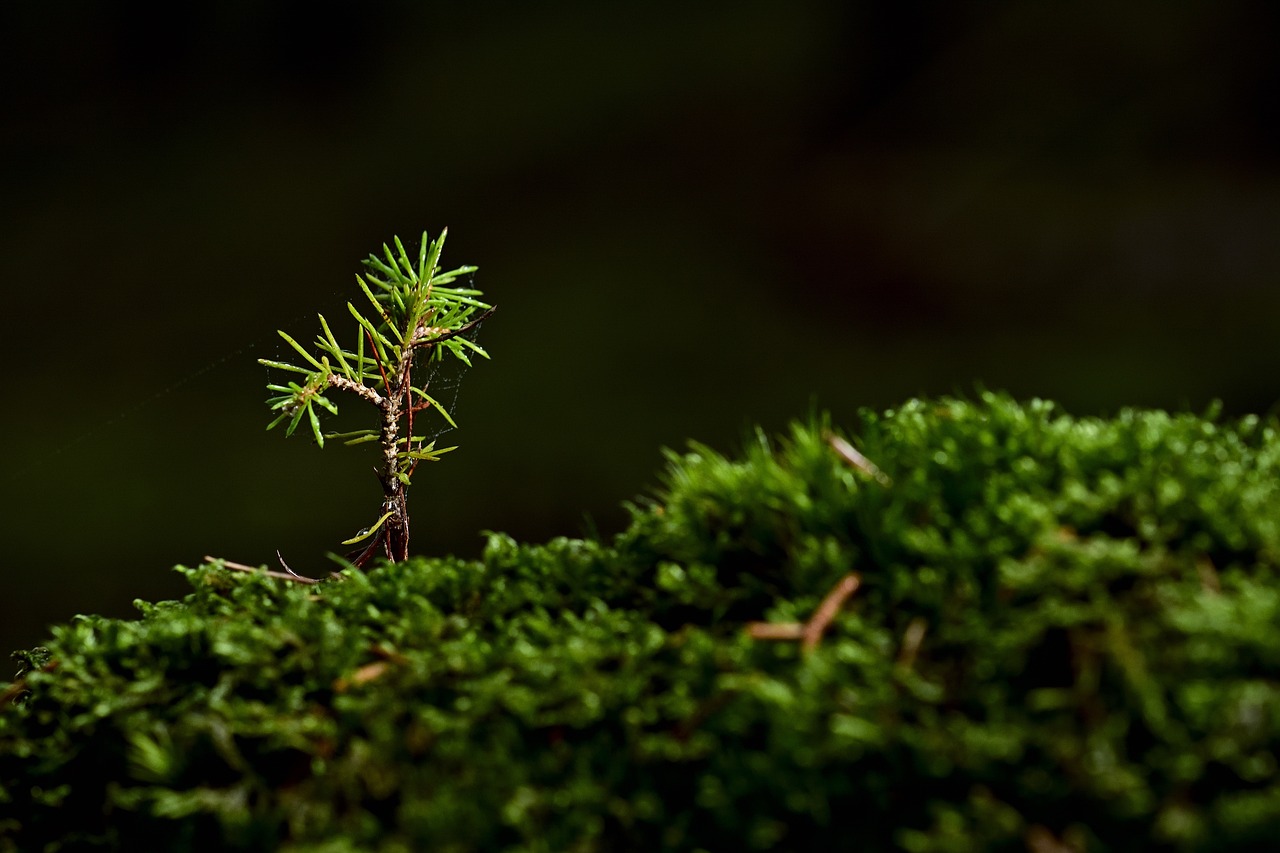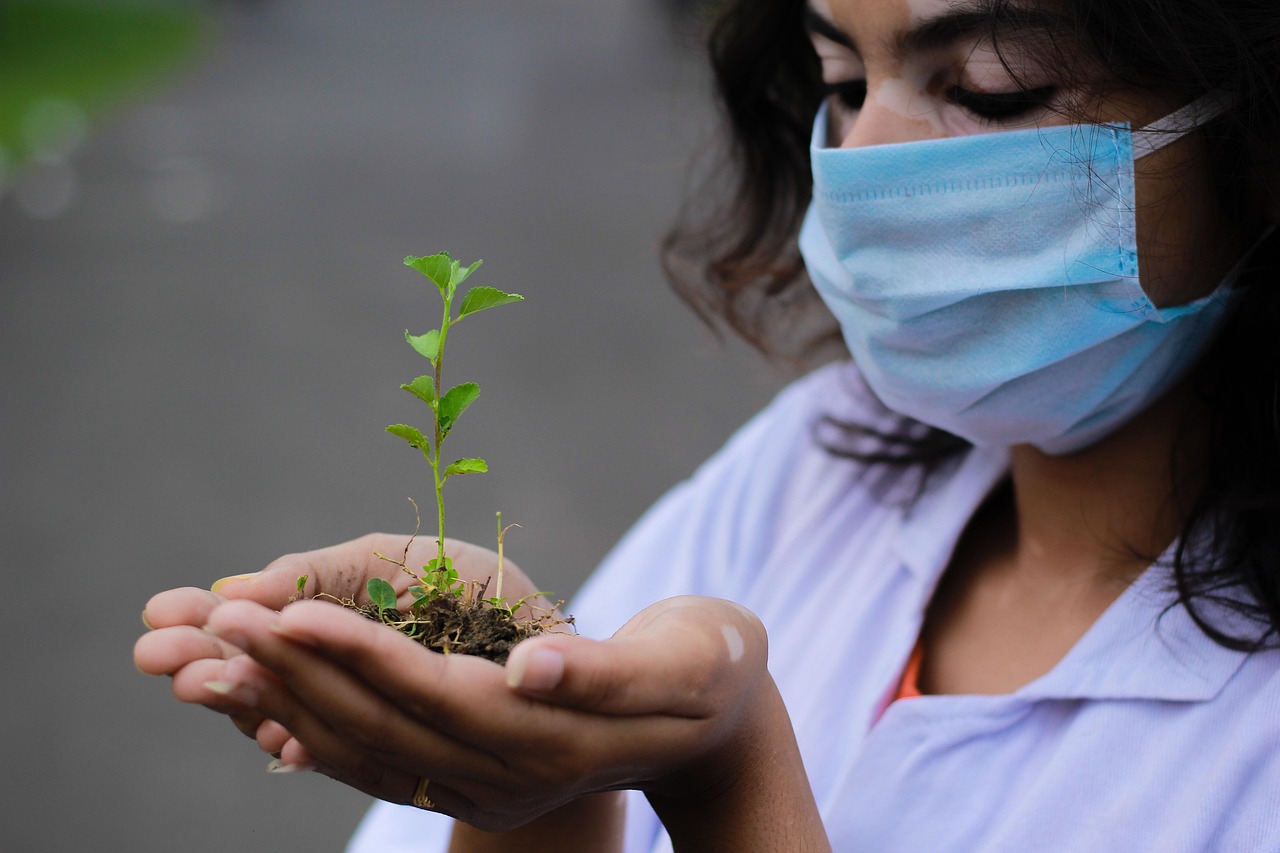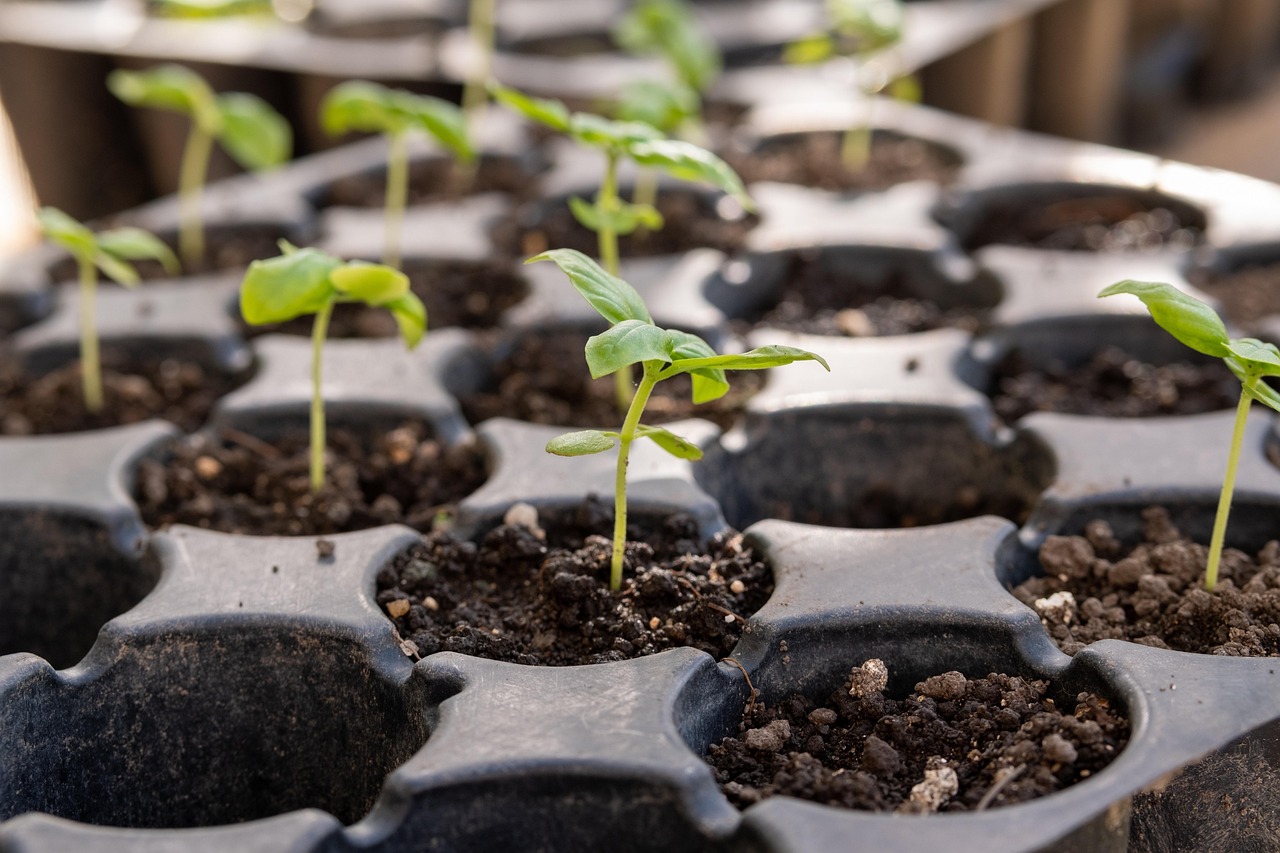Using chopsticks for seedling support is a simple and effective method to help young plants grow straight and strong. By inserting chopsticks into the soil next to each seedling, you can gently tie the plant to the stick, providing stability while allowing for healthy development.
Seedlings are delicate and often require extra care during their early growth stages. Support is crucial as they can be easily damaged by wind, water, or even the weight of their own leaves. This is where chopsticks come into play, offering a cost-effective solution for gardeners looking to provide necessary support without investing in more complex systems. They are readily available, easy to use, and biodegradable, making them a sustainable choice for gardeners of all levels.
When seedlings begin to sprout, they may not have the strength to stand upright on their own. As they grow, the risk of bending or breaking increases, especially if they are exposed to environmental factors like wind or heavy rain. Providing support ensures that your plants can focus their energy on growing rather than struggling to stay upright.
Why Use Chopstick Support?

Chopsticks offer several advantages as a support system for young plants. They are lightweight but sturdy, making them perfect for delicate seedlings. Additionally, they are long enough to provide adequate height for most seedlings, and their slim profile means they take up minimal space in the soil.
Here are some key benefits of using chopsticks for seedling support:
- Affordability: Chopsticks are inexpensive and can often be found at local restaurants or purchased in bulk.
- Easy Availability: They are commonly used in many cultures, making them easy to find.
- Biodegradable: Made from wood or bamboo, chopsticks will decompose naturally over time.
- Adjustable Height: You can easily adjust the height of the support as your seedlings grow taller.
- Minimal Disturbance: Inserting chopsticks into the soil causes minimal disruption to the roots of the seedlings.
To effectively use chopsticks for seedling support, it is important to follow some simple guidelines. Choosing the right time to insert them is crucial, as doing so too early or too late may not yield the best results. Ideally, you should place chopsticks in the soil when your seedlings are about 4-6 inches tall. This height ensures that they have established roots but still require support.
How to Set Up Chopstick Support
Setting up chopstick support for your seedlings involves a few straightforward steps. Here’s how you can do it:
- Select Your Chopsticks: Choose sturdy chopsticks; bamboo or wooden ones work best.
- Prepare Your Seedlings: Ensure that your seedlings are healthy and at a suitable height for support.
- Insert the Chopstick: Gently place the chopstick into the soil about 1-2 inches away from the base of the seedling. Be careful not to disturb the roots.
- Tie the Seedling: Use soft garden ties or string to loosely tie the seedling to the chopstick. Avoid tying too tightly, as this can damage the stem.
- Monitor Growth: As your plants grow, adjust the ties and chopsticks as necessary to accommodate their height.
This method not only provides physical support but also allows for air circulation around the plant. It is important to monitor your seedlings regularly. Adjustments may be necessary as they grow and develop stronger stems.
In addition to using chopsticks for support, consider other care aspects such as watering and light exposure. Proper care will enhance the effectiveness of your support system and contribute to healthy plant growth.
| Tip | Description |
|---|---|
| Timing | Insert chopsticks when seedlings reach 4-6 inches tall. |
| Material | Use bamboo or wooden chopsticks for best results. |
| Tying Method | Use soft ties to avoid damaging the stem. |
By following these tips, you can ensure that your seedlings receive the necessary support they need during their crucial early growth stages. The use of chopsticks is not only practical but also an environmentally friendly choice that benefits both your plants and your gardening practices.
Additional Techniques for Effective Seedling Support
While chopsticks provide an excellent support system for seedlings, there are additional techniques that can enhance their effectiveness. Combining different strategies can lead to healthier plants and better growth outcomes. Here are some supplementary methods to consider:
Using a Support Frame
A support frame can be particularly beneficial for larger plants or in windy environments. This method involves creating a structure around your seedlings to provide additional protection and stability.
- Materials Needed: Gather materials such as wooden stakes, wire, and garden fabric.
- Constructing the Frame: Create a rectangular frame around your seedlings by inserting stakes into the ground at each corner.
- Adding Support: Use wire or garden fabric to connect the stakes, forming a protective barrier that shields seedlings from strong winds.
This frame not only supports seedlings but also helps retain moisture and protect against pests. Be sure to monitor the frame’s condition regularly, adjusting as necessary to accommodate plant growth.
Choosing the Right Location
The location of your seedlings plays a significant role in their growth. Proper placement can reduce the need for excessive support. Consider these factors when selecting a location:
- Sunlight: Ensure your seedlings receive adequate sunlight. Most seedlings thrive in full sun, which helps strengthen their stems.
- Wind Protection: Plant seedlings in sheltered areas, such as near walls or larger plants, to minimize wind exposure.
- Soil Quality: Use well-draining soil to promote healthy root development, further stabilizing your seedlings.
By choosing the right location, you can help your seedlings develop stronger structures that require less external support.
Common Problems and Solutions
Despite your best efforts, seedlings may encounter challenges that can affect their growth. Identifying common problems early allows you to implement effective solutions.
Bending Stems
If you notice your seedlings bending or leaning, it may indicate insufficient light or weak stems. Here are steps to address this issue:
- Increase Light Exposure: Move seedlings to a brighter area or supplement natural light with grow lights.
- Adjust Support: Ensure chopsticks are properly positioned and adjust ties if seedlings are leaning toward the light source.
Pest Infestation
Pests can weaken seedlings and hinder their growth. To combat this problem, consider the following methods:
- Regular Inspection: Check your seedlings frequently for signs of pests, such as holes in leaves or visible insects.
- Natural Remedies: Use insecticidal soap or neem oil as a natural pesticide that won’t harm young plants.
- Companion Planting: Incorporate companion plants that repel pests naturally. For example, marigolds can deter various insects.
Addressing pest issues promptly can prevent further damage to your seedlings and ensure they remain healthy and strong.
Watering Techniques for Healthy Growth
Proper watering is crucial for seedling development. The right amount of moisture not only nourishes plants but also affects their stability and growth patterns.
Watering Frequency
The frequency of watering depends on several factors including soil type, climate, and plant species. As a general guideline:
- Check Soil Moisture: Stick your finger into the soil about an inch deep. If it feels dry, it’s time to water.
- Avoid Overwatering: Ensure pots have drainage holes to prevent waterlogging, which can weaken roots.
Irrigation Methods
There are various methods of watering seedlings that can promote healthy growth:
- Bottom Watering: Place pots in a tray filled with water. This allows the soil to absorb moisture from the bottom up without disturbing the seedlings.
- Misting: For very young seedlings, misting can provide moisture without overwhelming them. Use a spray bottle for gentle coverage.
By maintaining proper watering practices, you can significantly enhance seedling growth and support their structural integrity as they develop. Remember that consistent care leads to thriving plants that are well-supported and robust.

Fertilizing Young Seedlings
Fertilization plays a crucial role in the growth and development of seedlings. Providing the right nutrients at the right time can significantly enhance their strength and resilience. Understanding how to fertilize young plants effectively can set the stage for healthy growth.
Types of Fertilizers
There are two primary types of fertilizers: organic and synthetic. Each has its advantages and disadvantages, and the choice largely depends on your gardening philosophy and the specific needs of your seedlings.
- Organic Fertilizers: These are derived from natural sources such as compost, manure, or bone meal. Organic fertilizers release nutrients slowly, which helps prevent over-fertilization. They also improve soil structure and promote beneficial microorganisms.
- Synthetic Fertilizers: These are chemically manufactured and provide a quick nutrient boost. Synthetic fertilizers often contain specific ratios of nitrogen, phosphorus, and potassium (N-P-K). However, they can lead to nutrient runoff if not used carefully.
When to Fertilize
Timing is vital when it comes to fertilizing seedlings. Here are some guidelines to follow:
- Initial Feeding: Start fertilizing when seedlings have developed their first true leaves. This is typically a few weeks after germination.
- Frequency: Use a diluted nutrient solution every two to four weeks, depending on the growth rate of the seedlings and the type of fertilizer used.
- Adjust Based on Growth: Monitor the growth of your seedlings. If they appear pale or stunted, they may need additional nutrients.
Over-fertilization can be harmful and lead to nutrient burn. Always follow the recommended application rates on fertilizer packaging to avoid damaging your plants.
Providing Proper Air Circulation

Good air circulation is essential for seedlings to thrive. It helps prevent fungal diseases and encourages strong stem development. Here are some strategies to improve airflow around your seedlings:
Spacing Seedlings
Proper spacing allows air to flow freely between seedlings. When planting, consider these points:
- Follow Spacing Recommendations: Different plants have unique spacing requirements. Research the ideal distance for each seedling type.
- Avoid Overcrowding: Crowded plants can suffer from poor air circulation, making them more vulnerable to diseases.
Using Fans
If you’re growing seedlings indoors or in a greenhouse, using fans can significantly improve air circulation:
- Placement: Position small fans near seedling trays to create a gentle airflow without causing stress to the plants.
- Timing: Run fans for several hours each day, particularly during the warmest parts of the day.
This additional airflow helps strengthen stems and reduces humidity levels that can lead to mold or mildew.
Temperature Control for Seedlings
The temperature in which seedlings grow plays a significant role in their overall health. Maintaining an appropriate temperature range ensures optimal growth conditions.
Ideal Temperature Ranges
Most seedlings thrive in temperatures between 65°F and 75°F (18°C to 24°C). Here are tips for maintaining ideal conditions:
- Avoid Temperature Fluctuations: Sudden changes in temperature can stress seedlings. Try to keep their environment stable.
- Use Heating Mats: For seeds that require warmth to germinate, consider using heating mats placed under seed trays to maintain consistent temperatures.
Cooling Measures
If temperatures rise too high, take steps to cool down the environment:
- Shade Cloths: Use shade cloths or nets to block excessive sunlight during hot days.
- Ventilation: Open windows or use fans to promote airflow when temperatures become too warm.
By controlling temperature effectively, you can create a favorable environment that promotes strong, healthy seedlings.
Pest Management Strategies
Pest control is an essential aspect of maintaining healthy seedlings. Identifying pests early and implementing proper management strategies can help protect your plants from damage.
Identification of Common Pests
Being able to identify common pests will aid in prompt action. Some frequent pests include:
- Aphids: Small insects that cluster on new growth, sucking sap from seedlings.
- Spider Mites: Tiny pests that create webs on leaves and cause yellowing.
- Caterpillars: Larvae of moths or butterflies that can chew through leaves quickly.
Pest Control Methods
There are several effective pest management techniques you can utilize:
- Cultural Control: Rotate crops and remove debris that may harbor pests. This practice disrupts pest life cycles.
- Naturally Occurring Predators: Encourage beneficial insects like ladybugs or lacewings that feed on harmful pests.
- Pesticides: If necessary, choose organic pesticides that are less harmful to beneficial insects and the environment.
Implementing these strategies will help ensure that your seedlings remain healthy and free from pest damage as they grow.
Maintaining Healthy Seedlings Through Routine Care

To ensure your seedlings thrive, routine care is essential. Regular monitoring and attention to their needs can significantly impact their growth trajectory. Below are some key aspects to keep in mind for effective seedling maintenance:
Regular Monitoring
Consistent observation of your seedlings allows for early detection of any issues. Here are some tips for effective monitoring:
- Visual Checks: Examine your seedlings regularly for signs of stress, such as wilting, discoloration, or pest infestations.
- Check Soil Moisture: Regularly assess the soil’s moisture level to ensure it remains within the ideal range.
- Growth Tracking: Keep a record of your seedlings’ growth progress. This can help you identify trends and make necessary adjustments.
Pruning and Trimming
As seedlings grow, they may require pruning to promote healthy development. Pruning helps encourage bushier growth and can prevent overcrowding.
- Identify Weak Growth: Remove any weak or leggy stems that may be competing for resources.
- Trim Leaves: If the leaves become too dense, trimming them can improve airflow and light penetration.
Always use clean, sharp tools for pruning to minimize the risk of disease transmission.
Preparing for Transplanting
Once your seedlings have established themselves and reached a suitable size, it may be time to transplant them into larger pots or directly into the garden. Proper preparation is crucial for a successful transition.
Timing the Transplant
The right timing for transplanting can make a significant difference in the survival rate of your seedlings. Consider these factors:
- Frost Dates: Ensure that the danger of frost has passed before transplanting outdoor seedlings.
- Seedling Maturity: Wait until seedlings have at least two sets of true leaves before moving them.
Transplanting Steps
Follow these steps for a successful transplant:
- Water Generously: Water your seedlings thoroughly a few hours before transplanting to reduce stress.
- Prepare the New Location: Whether it’s a larger pot or a garden bed, ensure that the new location is well-prepared with appropriate soil and spacing.
- Gently Remove Seedlings: Carefully take seedlings out of their current pots, keeping as much soil around the roots as possible.
- Plant at the Right Depth: Place seedlings in their new location at the same depth they were previously growing.
- Water Again: Water the seedlings immediately after transplanting to help settle the soil around the roots.
Final Thoughts
The journey of nurturing seedlings to robust plants is rewarding and requires effort and attention. Using chopsticks for support, maintaining proper watering and fertilization practices, ensuring good air circulation, and managing pests are all critical components of successful seedling care. By implementing the tips discussed throughout this article, you can create an environment that fosters healthy growth and development for your young plants.
The simplicity of using everyday items like chopsticks for support is a testament to the fact that effective gardening does not need to be complicated or expensive. As you develop your gardening skills, remember that patience and observation are key. Every plant is unique, and understanding its specific needs will lead to a flourishing garden.
Your commitment to caring for seedlings will pay off in the long run as you watch them grow into healthy, productive plants. Embrace the learning experience that comes with gardening, and enjoy the beauty of nurturing life through your efforts.
